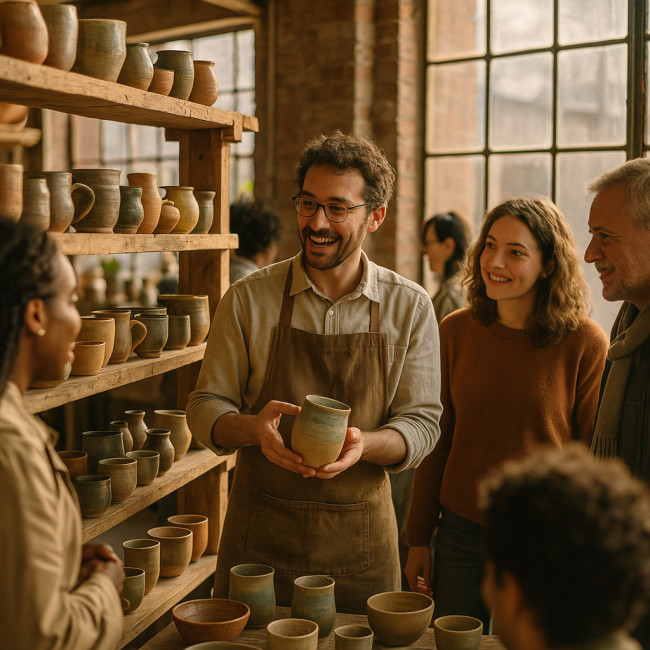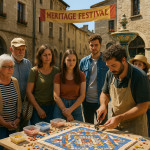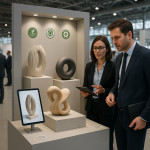From open studios to art markets: ceramist event strategy that converts clients
Planning events can feel like firing clay in a kiln – if the temperature is wrong, the work cracks. This guide walks you through a proven ceramist event strategy that turns casual visitors into loyal clients, from intimate open-studio weekends to high-energy art markets. You will learn which formats convert best, how to prepare your pieces and pitch, and the post-event tactics that keep commissions rolling in.
Why every ceramist needs a clear event strategy

Events remain the fastest route to new collectors. According to the UK Crafts Council, 79 % of buyers first discovered their favourite makers at a physical show. Yet many potters jump from one fair to the next without tracking results. A focused ceramist event strategy aligns three pillars:
- Audience fit – match the right crowd to your price point and style.
- Conversion pathway – plan the steps from handshake to invoice.
- Follow-up system – nurture leads after the applause ends.
Choosing the best event format for your studio goals
| Event type | Typical footfall | Average conversion* | Budget needed | Ideal goal |
|---|---|---|---|---|
| Open studio | 50 – 200 | 5 % | Low | Build local collector base |
| Craft fair | 500 – 3 000 | 12 % | Medium | Test new product lines |
| Art market | 1 000 – 10 000 | 15 % | Medium–High | Secure cash sales |
| Design week pop-up | 5 000 – 30 000 | 20 % | High | Meet trade buyers |
| Trade show | 10 000 – 50 000 | 25 % | Very High | Land wholesale contracts |
*Conversion = visitors who buy on site or commission within 60 days.
Visualising conversion potential
Source : Crafts Council Market Report 2024
Step-by-step roadmap to maximise each event
1. Pre-event groundwork
- Select the right pieces – mix entry-price cups with signature statement vases.
- Photograph fresh work and update your portfolio. Our detailed guide on capturing ceramics that wow online scouts shows lighting tricks that double click-throughs.
- Announce early – email your list six weeks out and post teasers weekly.
- Set targets – revenue, newsletter sign-ups, follow-up meetings booked.
2. Booth and studio layout
People decide within eight seconds whether to stop. Use eye-level shelving and a clear focal piece to anchor attention. For markets, repeat your name on every shelf edge. At open studios, create a “try the wheel” corner – interactive zones increase stay time by 42 %.
Need layout inspiration? Check the article on planning a year-round art-event roadmap for sketches you can adapt.
3. Story-driven sales conversations
- Lead with the origin of your glaze or clay.
- Ask visitors what they collect or gift.
- Offer a handling experience – weight and texture convert browsers into buyers.
Prepare one short and one long narrative. The short hook lasts 30 seconds for busy fairs; the long version suits studio tours.
4. Capture data on the spot
Sales are great, but contacts fuel growth. Incentivise sign-ups with an exclusive preorder window. A simple tablet form feeding your CRM beats handwritten lists you forget to decode.
5. Post-event follow-up that seals the deal
- 48-hour email – personalised thank-you plus photo of the piece they admired.
- 7-day reminder – share behind-the-scenes firing images.
- 30-day offer – limited edition or workshop seat.
Ceramists who stick to this sequence report a 28 % lift in commissions, according to an internal survey of craft-designer event listings.
Advanced tactics to boost your ceramist event strategy
Bundle experiences with products
Offer a “buy a platter, book a glazing lesson” package. Experiential add-ons raise average order value by €65.
Leverage corporate gifting seasons
Business buyers scout early autumn fairs. Read how to price volumes in our corporate-gifting pricing playbook.
Network like a pro
Five meaningful conversations beat fifty shallow exchanges. For practical ice-breakers, review this art-fair networking primer.
Track and tweak
Keep a spreadsheet of costs, footfall, sales, and follow-up conversions for each event. After three shows you will spot patterns that let you drop low-ROI fairs and double down on high performers. This data-led mindset turns an ad-hoc schedule into a ceramist event strategy that compounds year on year.
Mini-Quiz: Test your event-planning instincts
FAQ
- How many events should a ceramist attend each year?
- Start with four – one per quarter – and measure ROI. Scale up only when profit exceeds 3× the combined booth and travel costs.
- What payment options convert best at fairs?
- Mobile card readers capture 65 % of sales, while QR code links to online invoices secure larger custom orders.
- Should I discount leftovers on the last day?
- A small bundle offer (e.g., buy three cups, get 10 % off) works better than blanket discounts, preserving brand value.
- Is renting a trade-show booth worth the high fee?
- If your average order size exceeds €500 and you have production capacity, trade shows can pay off within one contract.
Take action now
Map your next 12 months of events, set measurable goals, and implement the follow-up flow outlined here. Your kiln may craft the work, but your ceramist event strategy fires up sustainable income. Ready to level up? Download the free checklist inside our newsletter and start booking venues today.











